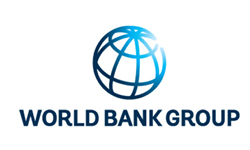1740 results found
Featured results



More results
In 2018, after 3 years of droughts, the city of Cape Town in South Africa faced severe water shortages. Dam reservoir capacity had dropped to critical levels and the city was fast approaching “Day Zero” of no water availability. Desalination, new dams, strict water usage limits – all solutions were on the table. Solving the water crisis in Cape Town required a variety of activities, including gray infrastructure, behavioral change, pricing changes, and a massive communications campaign. Among all these approaches, one important contribution was surprising: the removal of invasive plant species.
The draft Reference Guide on Output Specifications for Quality Infrastructure is open for public consultation to capture your insights and feedback for the final version.
The Reference tool is meant to serve as a practical tool to help governments and other stakeholders understand and implement the critical success factors that deliver inclusive infrastructure. The Framework for Inclusive Infrastructure summarises the following six Actions Areas and related practices that ought to be considered for the systematic implementation of inclusivity in infrastructure at the policy and project levels.
The Pensions Infrastructure Platform was developed to facilitate long-term investment in UK infrastructure by pension schemes. It was established by UK pension schemes to operate and invest for pension schemes. It allows pension schemes of all sizes to invest in national infrastructure projects by pooling resources into a single investment fund.
This analysis was drawn from the GI Hub's InfraCompass tool. and the case study reflects information on how the reform of land registration in the Malaysian state of Sarawak took place.
PPP-Projects on Federal Highways, 5 Concessions (shadow toll) (2005-2011), 8 Availability-Projects (since 2009), 6 Availability-Projects in tender or pipeline (if efficient), widening from 4 to 6 lanes, mainly brownfield but as well some greenfield sections
PPP-Projects on Federal Highways, 5 Concessions (shadow toll) (2005-2011), 8 Availability-Projects (since 2009), 6 Availability-Projects in tender or pipeline (if efficient), widening from 4 to 6 lanes, mainly brownfield but as well some greenfield sections



This paper provides reflections and considerations as to how MDBs including the IDB can use the Project Preparation Facilities (PPFs) to help countries fill the infrastructure gap by improving the quality of projects, reducing and mitigating risks, and leveraging private financing.

Policy and regulatory implications of recent advances in the benchmarking of infrastructure investments.
The infrastructure supply gap is significant, but by focusing on four key deliverables, the G20 can support and establish new, technology-based critical networks that would be resilient in future crises.

The World Economic Forum publishes a Financial Development Index annually, which measures and analyses the factors enabling the development of financial systems among different economies.



Guinea has taken notable initiatives to improve its financial markets.



This publication discusses financial viability support in the global landscape of infrastructure finance.


Infrastructure can often be used as a pawn in the political chess game, not only at a federal level between political parties, but at a foreign policy level too. It’s crucial that a cross-border infrastructure project has political support and cooperation from all parties involved, and that it’s being supported not for political gain, but to further regional development. A lack of strong political leadership can be detrimental to a cross-border project, and weak capacity can be a deterrent to investors.
Risks can be hard to define, manage and mitigate. In infrastructure projects that cross regional or national borders and involve multiple parties from both the public and private sector, these risks may be amplified.
When we as consumers decide to invest our money—whether through shares, bonds, or other instruments—we look at whether our investment will deliver a solid financial return. It makes sense then that the same risk-return principle is applied to investments in infrastructure.
As outlined earlier in this blog series, private investors are looking for reliable returns to justify the risks that they are taking. Financing and procurement of cross-border projects will often be more complex than national projects due to the scale of the project and compounded risks, and the financial returns may be more uncertain than for national projects.
Over the last decade, much has been written about globalisation and how we’re more connected than ever before. In the infrastructure world, we think of connectivity as the “linkages of communities, economies and nations through transport, communications, energy, and water networks across a number of countries” .
Investors need certainty of the division of responsibilities between the various parties involved in the project, as well as a clear commitment of payment from the parties, before becoming involved in the project themselves. This requires countries to have reached a clear and durable commitment to their respective responsibilities.




 Visit Consultation Page
Visit Consultation Page












